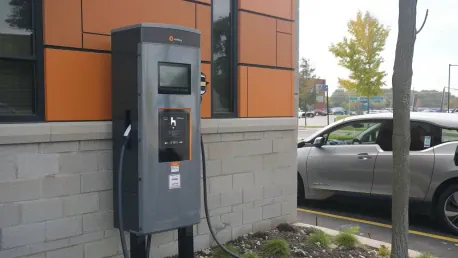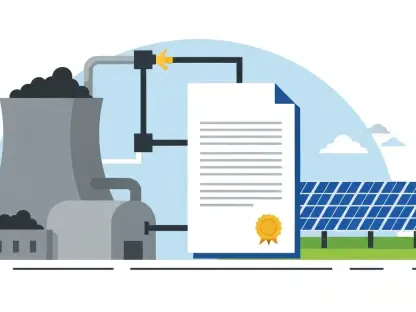In 2024, American EV sales surged to 8.1 percent of all new vehicles sold, based on data from Cox Automotive. If a climate-conscious vehicle is a top priority for you, consider how driving an electric vehicle (EV) impacts your carbon footprint. And if your goal is to lower your personal carbon footprint, getting behind the wheel of an electric vehicle can help.
1. What is the carbon footprint of electric cars?
Your carbon footprint is the amount of emissions that you are responsible for releasing into the environment. EVs have no tailpipe emissions, but charging them can still create carbon pollution. However, the carbon cost of manufacturing and charging an EV is often lower than a vehicle with an internal combustion engine (ICE), even when accounting for carbon pollution from EV charging, according to the Environmental Protection Agency.
Think of it this way: A driver covering 15,000 miles behind the wheel of a 2025 Toyota Corolla will emit between 8,400 and 8,800 pounds of carbon per year. Compare that to someone driving a 2025 Hyundai Kona, an EV. The Kona with 19-inch wheels—the least efficient option—will release only 2,457 pounds of carbon in the same amount of time, according to NYSEG data. This difference clearly underscores the significant carbon savings possible when switching to an EV.
2. What is the carbon footprint of electric car batteries?
Critics often point out that manufacturing an EV’s battery creates more pollution compared to manufacturing a typical gasoline vehicle. A sedan powered by an electric battery will have a higher initial carbon footprint than a conventional gas-powered sedan. However, according to research published in IOP Science, these two footprints match after an average of one and a half years. The EV then continues to boast a lower lifetime carbon footprint than the ICE vehicle, making it a more sustainable choice over time.
Many companies are working towards establishing recycling systems to reduce the carbon cost of producing batteries. This recycling push will lower emissions created during the production process and reduce overall environmental impact. As recycling practices improve, the carbon footprint associated with EV batteries is expected to decrease, making EVs even more environmentally friendly in the future.
3. How to finance an eco-friendly vehicle
Electric vehicles usually have a higher upfront cost compared to gas-powered options. The average new EV cost $55,614 in January 2025, according to Kelley Blue Book. This is compared to $48,641 for a new gas-powered vehicle. However, the price gap is narrowing as technology advances and more affordable options become available on the market. When shopping for an EV, consider checking out legacy brands that boast more accessible prices. For example, the 2025 Nissan Leaf starts at just $28,140, offering a budget-friendly entry point into the world of electric vehicles.
Choosing a used EV over a new one may also help you save money. The process of getting an EV auto loan is similar to any other auto loan.
4. Verify your credit profile
Lenders will review your credit history. The higher your credit score, the more favorable your auto loan rates will be, which is crucial since EVs typically cost more. Verifying your credit profile and understanding your credit standing can help you navigate the loan application process more effectively. This step is essential in ensuring that you get the best possible rates for your new eco-friendly vehicle.
5. Get prequalified with multiple lenders
The lending market is broad. To find the ideal loan for your requirements, compare at least three quotes. Prequalifying allows you to view rates and terms without a hard credit inquiry affecting your score. Consider options from online lenders, banks, and credit unions. If your credit score makes prequalification challenging, seek quotes from lenders specializing in bad credit. By exploring multiple options, you can ensure that you get the best possible loan terms for your EV purchase.
6. Submit your loan application
Before filling out the application, gather all necessary documentation to expedite the process. Proper preparation ensures a smoother application process and reduces the likelihood of delays. Have your identification, income verification, and vehicle information ready to streamline the procedure. Submitting a complete and organized application package can increase your chances of loan approval and help you move forward in acquiring your EV.
7. Finalize the agreement
Once you have identified the best loan for your needs, you can start making payments and work toward full EV ownership. Review the loan terms carefully, ensuring that you understand all conditions and repayment obligations. Finalizing the agreement means that you are committed to the terms and conditions set forth by the lender. By diligently making payments, you’ll be on your way to enjoying the environmental and financial benefits of owning an electric vehicle.
8. EV tax credits
Currently, you may qualify for up to $4,000 in federal tax credits for a used EV and up to $7,500 for a new EV. But with the possible elimination of EV tax credits, you may want to buy an EV sooner rather than later if you want to take advantage of these credits. That said, there will still be some state tax credits available to some buyers, potentially reducing the overall cost of your EV purchase. Staying informed about available incentives can significantly affect your final cost.
Bottom line
In 2024, electric vehicle (EV) sales in the United States jumped to 8.1 percent of all new car sales, according to data from Cox Automotive. This increase indicates a promising shift towards greener transportation options. For those who prioritize environmentally friendly choices, the decision to drive an EV can significantly affect one’s carbon footprint. As we continue to grapple with climate change, the collective impact of individual choices becomes more critical. If reducing your carbon emissions is a personal goal, then switching to an electric vehicle can be a strategic move. EVs produce lower emissions compared to traditional gasoline-powered vehicles and contribute less to air pollution. Additionally, many electric vehicles boast advanced technology and efficient energy use, further aligning with eco-friendly objectives. By opting for an EV, you not only decrease your carbon footprint but also support the broader movement towards sustainable transportation.









